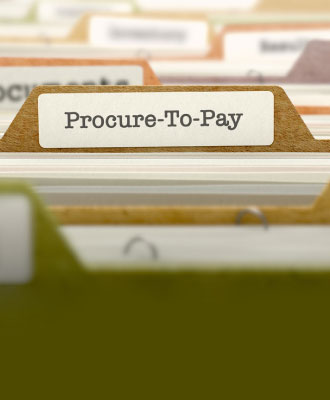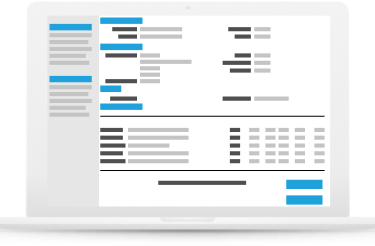Accurate financials are a cornerstone of both accrual accounting and a successful business management strategy. Without complete and transparent financial statements, everything from cash flow management to taxes to financial forecasts will be compromised, putting your company at risk.
Following the Generally Accepted Accounting Principles (GAAP) in general, and using the matching principle in particular, can help both large and small businesses who use the accrual method of accounting to manage their finances effectively.
A Matter of Accuracy: What is the Matching Principle?
Cause and effect is a basic concept of the universe. Companies who want to make money (revenue) need to spend money (expenses) to do so. The matching principle connects these two financial dots by drawing a line between expenses/costs and the benefits they provide to create clear, comprehensive, and permanent financial records.
In financial accounting—specifically, the accrual method of accounting rather than cash basis accounting—the matching principle requires that related revenues and expenses must be matched in the company’s accounting system in the same reporting period. It also creates a liability recorded on the balance sheet for the end of that same accounting period.
The matching principle is one of the best practices required to conform to GAAP, a set of accounting principles that ensures companies using accrual accounting follow guidelines for accuracy, consistency, permanency, clarity, and prudence, among others. Following these principles doesn’t just improve performance; it’s a legal requirement in the United States, and investors rely on companies using the matching principle to produce financial records with clear, consistent connections between expenses and revenue.
The matching principle is a corollary of the revenue recognition principle, which requires revenue to be recognized and recorded when it is earned, rather than when it is received.
In procurement—specifically, in the procure-to-pay (P2P) process connecting procurement with its partner, accounts payable (AP)—the matching principle is used to connect purchase orders (POs) with their corresponding invoices and other related documentation. The three-way match is the most common method used, but procurement and accounting teams can use two, three, or even four-way matching, depending on their internal processes and the amount of detail required.
In both accounting and procurement, effective use of the matching principle helps organizations who use accrual basis accounting conform to GAAP and ensure their procurement and accounting systems are working properly. It also ensures their financial records are accurate and complete, so the company doesn’t misstate its financial position or make spending decisions based on incomplete or inaccurate data that will leave it struggling to manage working capital or meet its obligations.
“Companies who want to make money (revenue) need to spend money (expenses) to do so. The matching principle connects these two financial dots by drawing a line between expenses/costs and the benefits they provide to create clear, comprehensive, and permanent financial records.”
Examples of the Matching Principle
Understanding how the matching principle works is much easier with a few concrete examples. Let’s take a closer look at some from both accounting and procurement.
In accounting, Cost of Goods Sold (COGS) is a pretty standard example of an expense with a direct cause-and-effect relationship to sales. Wages and employee bonuses, as well as depreciation, also fall into this category.
Looking at a more specific example, let’s say Company X generates all of its sales through its sales team, with representatives earning a 15% commission. Commissions are paid to the sales reps on the 20th day of the month following the month wherein sales occurred; commissions for sales made in July are paid on August 20th, for example.
Let’s say Company X generates $90,000 worth of sales revenue in July, and so will pay its sales representatives $13,500 in commissions on August 20th.
Using the matching principle, the company will record $13,500 of commissions expenses on its July income statement, as well as the $90,000 in sales. This will also create a corresponding current liability of $13,500 on the July balance sheet (this is known as an accrual, a type of adjusting entry. Dated July 31st, this accrual is used to debit the Commissions Expense account for $13,500 and credit Commissions Payable for $13,500). The accounting team makes these adjusting entries to keep the revenue and related expense together, ensuring the latter is recorded when incurred, rather than when it is paid.
Note: If there’s no direct cause and effect relationship between a particular expense and revenue, the cost will be charged to expenses right away. Alternatively, expenses with an indirect but ongoing relationship to revenue generation should be added to the income statement as depreciation over time, or added to the income statement for the accounting period wherein those expenses end. This is known as systematic allocation.
So, to extend our example, general research and development costs without direct ties to revenue created by the sale of goods and services would be charged to the related expenses account immediately. Another example would be a singular Internet or television advertisement broadcast during a major sporting or entertainment event. Both of these investments will (it is hoped) generate revenue in the long-term, but there’s no way to draw a direct line between dollars spent and future revenue generated.
On the other hand, the purchase of a fixed asset, such as a large commercial 3D printing system with a useful life of 96 months and a price tag of $192,000, will generate a monthly depreciation expense of $2,000 on each month’s income statement ($192,000 ÷ 96 = $2,000/month).
In procurement, the matching concept follows a similar path, except it provides a cause and effect connection between a purchase order, its corresponding invoice, and any receiving paperwork related to the transaction.
Before any invoice is paid, the accounts payable team reviews each line item to ensure the pricing, quantities, terms, and item descriptions match those on the purchase order. Then they check both against the receiving paperwork (usually a receipt or packing slip) to verify all three match one another.
Invoices that don’t match get flagged for further review, and payment may be delayed while the AP team chases down exceptions.
Match Faster and More Accurately with Automation and AI
In both procurement and accounting, using digital tools helps simplify and strengthen your workflows. Choosing a full-featured, cloud-based, centralized procurement solution like PurchaseControl gives you access to automation, artificial intelligence, and analytic tools you can use to:
- Automate your entire P2P process—including three-way matching.
- Centralize data collection, management, and analysis.
- Improve bookkeeping, budgeting, and financial decision-making.
- Provide a foundation for process automation and optimization that can be readily applied to accounts payable, accounts receivable, and other areas.
- Integrate all of your applications, from accounting to marketing to procurement, into a cohesive software environment with full transparency into all financial data.
- Use complete and accurate financial information to generate better financial reports, create detailed financial forecasts, optimize cash flow, etc.
A Match Made in Accounting Heaven
There’s nothing quite like the peace of mind that comes with knowing your financial ducks are all in a row, and that your bookkeeping is complete, accurate, and clear. Using the matching concept, along with the right tech tools, can help your team keep financial records that conform to GAAP and follow best practices—and keep your business on the right side of legal and industry accounting requirements.
Better still, it will ensure you’ve got the financial data you need to generate actionable insights, satisfy investor expectations, and create effective financial planning strategies to innovate, compete, and grow.
PurchaseControl Gives You the Digital Tools You Need to Optimize Your Financial Health
Find Out How








